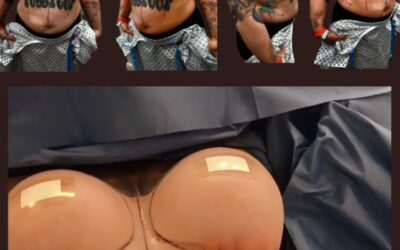Breast Implant Medical Screening
- Breast implants require specialized screening techniques, including modified mammograms and potential alternative imaging like MRI or ultrasound
- The Eklund displacement technique allows for comprehensive imaging of breast tissue around implants during mammography
- Most women with implants can successfully breastfeed, with surgical technique and implant placement being key factors
- Regular monitoring is crucial, with recommended screenings starting at age 40 or earlier for those with family history
- Implants are not lifetime devices and may require replacement every 10-15 years
- Patients should maintain detailed records of implant type, placement, and previous imaging results
- Signs of potential implant issues include asymmetry, persistent pain, swelling, or changes in breast tissue
Table of Contents
- Understanding Breast Implants and Medical Screening Methods
- How Mammograms Work with Breast Implants
- MRI and Ultrasound Alternatives for Implant Screening
- Can You Successfully Breastfeed with Breast Implants?
- Signs of Potential Implant Issues During Screening
- Best Practices for Breast Cancer Screening with Implants
- Recovery and Long-term Care for Implants
Understanding Breast Implants and Medical Screening Methods
Breast implants come in two primary types: silicone gel and saline-filled. Each type requires specific consideration during medical screening procedures. Silicone implants are composed of a silicone shell filled with silicone gel, while saline implants contain sterile salt water. The presence of these implants necessitates modified screening approaches to ensure accurate breast tissue examination.
Regular screening becomes particularly important for individuals with breast implants, as they may require additional imaging views and specialised techniques. The density and placement of implants can affect how breast tissue appears on standard mammograms, making it crucial to inform healthcare providers about their presence before any screening procedure.
Contact
How Mammograms Work with Breast Implants
During a mammogram with breast implants, radiologists employ the Eklund displacement technique, which involves carefully moving the implant backwards whilst pulling the breast tissue forward for clearer imaging. This specialised approach typically requires four additional views alongside the standard four views of a regular mammogram.
While some patients worry about mammograms causing implant rupture, the risk is minimal when performed by experienced technicians. However, the procedure may cause slightly more discomfort compared to standard mammograms. Technicians take extra care to apply appropriate compression while ensuring clear imaging of the breast tissue around and in front of the implant.
MRI and Ultrasound Alternatives for Implant Screening
MRI scans offer superior visualisation of breast implants and surrounding tissue, making them particularly effective for detecting silent ruptures in silicone implants. Ultrasound provides real-time imaging and can be especially useful for initial assessment of implant-related concerns. These alternatives may be recommended alongside or instead of mammography, depending on individual circumstances.
While MRI screening typically costs more than mammography, it provides detailed imaging without compression and can detect issues that might be missed on standard mammograms. The choice between screening methods often depends on factors including implant type, placement, and specific concerns being investigated.
Can You Successfully Breastfeed with Breast Implants?
Most women with breast implants can successfully breastfeed. The ability to produce milk largely depends on the surgical technique used and implant placement. Submuscular placement (under the chest muscle) typically has less impact on milk ducts and glandular tissue than subglandular placement. Studies show that breast augmentation generally doesn’t affect milk production or quality.
Research indicates that neither silicone nor saline implants pose risks to nursing infants. However, it’s essential to monitor for any changes in implant feel or appearance during pregnancy and breastfeeding, as hormonal changes can affect breast tissue. Consulting with experienced surgical specialists before pregnancy can help address specific concerns about breastfeeding with implants.
Signs of Potential Implant Issues During Screening
During screening, radiologists look for several key indicators of implant-related concerns. These include changes in implant shape, capsular contracture (hardening of scar tissue), ruptures, and any unusual calcifications. Common warning signs that warrant immediate attention include asymmetry changes, persistent pain, swelling, or hardening of the breast tissue.
Regular monitoring helps detect potential issues early. Patients should maintain a record of their implant details, including type, size, and placement date, to facilitate accurate assessment during screening procedures. Any changes in breast appearance or sensation should be promptly reported to healthcare providers.
Best Practices for Breast Cancer Screening with Implants
Women with breast implants should undergo mammography at recommended intervals, typically starting at age 40 or earlier if there’s a family history of breast cancer. It’s crucial to choose imaging centres with experience in screening patients with implants and to inform the facility about implant presence when scheduling appointments.
Clear communication with healthcare providers about implant type, placement, and any previous complications ensures appropriate screening protocols. Maintaining detailed records of implant information and previous imaging results helps establish a baseline for comparing future screenings.
Recovery and Long-term Care for Implants
Long-term implant health requires regular monitoring and adherence to follow-up schedules. While modern implants are designed for durability, they’re not lifetime devices. Regular self-examinations help familiarise patients with their implants’ normal feel and appearance, making it easier to detect changes.
The current recommendation suggests considering implant replacement or removal every 10-15 years, though this varies based on individual circumstances. Maintaining a healthy lifestyle, avoiding extreme physical impact to the chest area, and attending regular check-ups contribute to optimal implant longevity.
Frequently Asked Questions
- Do breast implants interfere with mammogram accuracy?
- Breast implants can slightly complicate mammogram imaging, but specialized techniques like the Eklund displacement method allow radiologists to obtain clear images. Technicians take additional views to ensure comprehensive breast tissue examination around the implant.
- How often should women with breast implants get screened?
- Women with breast implants should follow standard screening guidelines, typically beginning mammograms at age 40 or earlier if there’s a family history of breast cancer. Annual or biennial screenings are recommended, with additional imaging methods like MRI potentially used for comprehensive assessment.
- Can breast implants rupture during a mammogram?
- The risk of implant rupture during mammography is extremely low when performed by experienced technicians. Modern implants are designed to be durable, and careful compression techniques minimize potential damage during screening procedures.
- What screening alternatives exist for women with breast implants?
- Alternative screening methods include breast MRI and ultrasound. MRI provides detailed imaging without compression and is particularly effective for detecting silent ruptures in silicone implants. Ultrasound offers real-time imaging and can be useful for initial implant assessments.
- Do breast implants affect breastfeeding ability?
- Most women with breast implants can successfully breastfeed. The surgical technique and implant placement determine milk production potential. Research shows that neither silicone nor saline implants pose risks to nursing infants when properly placed.
- How long do breast implants typically last?
- Current recommendations suggest considering implant replacement or removal every 10-15 years. However, this varies based on individual circumstances, implant condition, and any potential complications detected during regular medical screenings.
- What signs indicate potential implant issues?
- Warning signs include changes in breast symmetry, persistent pain, swelling, hardening of breast tissue, unusual calcifications, or changes in implant shape. Any noticeable changes should be promptly reported to a healthcare provider for professional evaluation.




